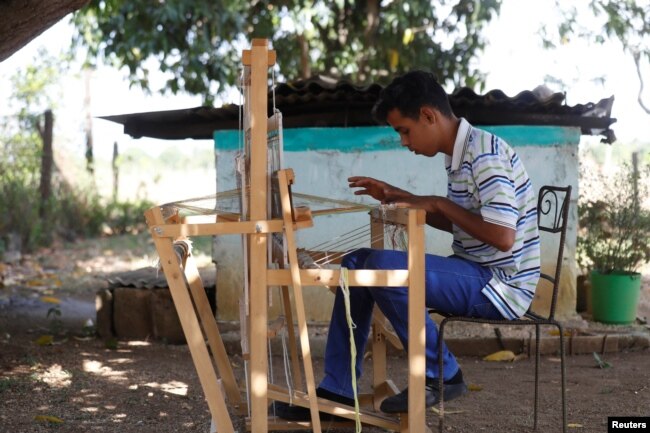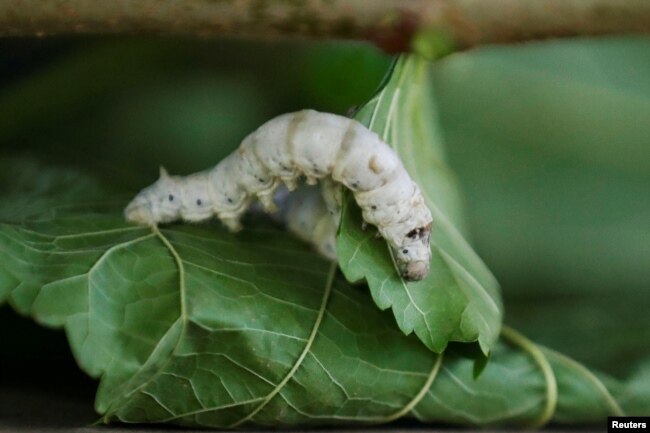A scientist in Cuba is raising silkworms native to Asia in hopes the creatures will produce local, high quality silk for clothing.
Dayron Martin is a biochemist who lives in western Cuba. He carries out experiments at the Indio Hatuey Experimental Station. The research center was established in 1962 in an effort to improve agriculture production methods in the Caribbean nation.
A reporter from Reuters news agency recently visited Martin’s laboratory. As he looked over a table of many silkworms, he explained that he oversees the whole lab operation from start to finish. This includes raising the silkworms, also known as caterpillars, producing their food and harvesting their silk.

As part of his work, Martin heads the ArteSeda project. He told Reuters the project has progressed well so far. The goal is for Martin to harvest high-quality white fibers that can be used by the local population to make clothing and possibly other products.
Martin described his work as a Chinese “ancestral process” that has been practiced for more than 5,000 years. He said it was only recently brought to Cuba.
Martin said he does not have to go far to get materials for the caterpillars’ food – he mainly uses dark green mulberry leaves from plants growing outside his lab. “(The worms) need very specific conditions,” he added.

The project began with financial support from the European Union and the Cuban government. It more recently also received money from the French government. The effort aims to teach artisans the process so they can learn to raise worms on their own.
Cuba was chosen because of its climate. The country has warm temperatures and a lot of wind. In addition, its growing season lasts the full year.
Silkworms are the young form of a kind of moth native to Asia. The caterpillars produce a cocoon of silk fiber that has long been used to manufacture many kinds of products.

The artisans can use silk to create products at home to sell to local people and visitors, said Dalgi Chaviano. She owns a small shop in Havana that produces beauty products, fabrics and other materials.
Chaviano told Reuters she recently got approval from the local government to raise mulberry trees and silkworms in Havana. This will permit her to produce her own material for products.
“Every day I discover something new to do with the silk,” Chaviano said.
I’m Bryan Lynn
Bryan Lynn adapted this story for VOA Learning English, based on reports from Reuters.
____________________________________________
Words in This Story
fiber – n. one of the thin threads that forms a substance such as cloth
artisan – n. someone who does skilled work with their hands
moth –n. a winged insect that, in its early development, is a wingless caterpillar
cocoon – n. a cover that protects some insects as they develop into adults
fabric – n. cloth material
